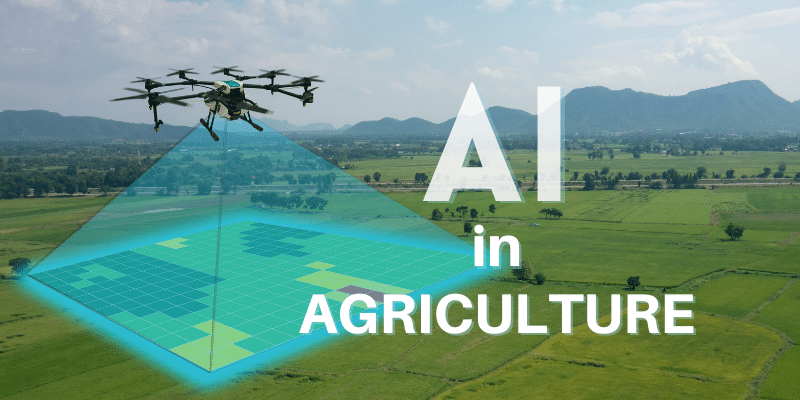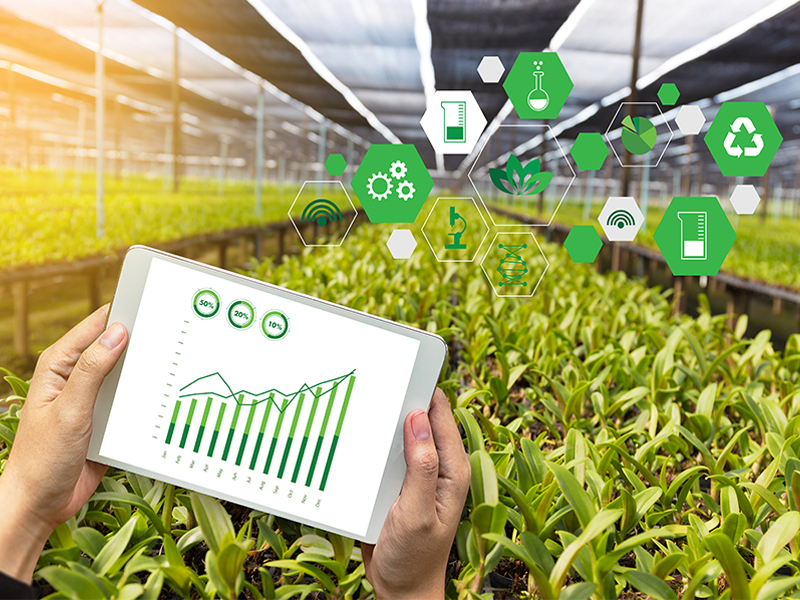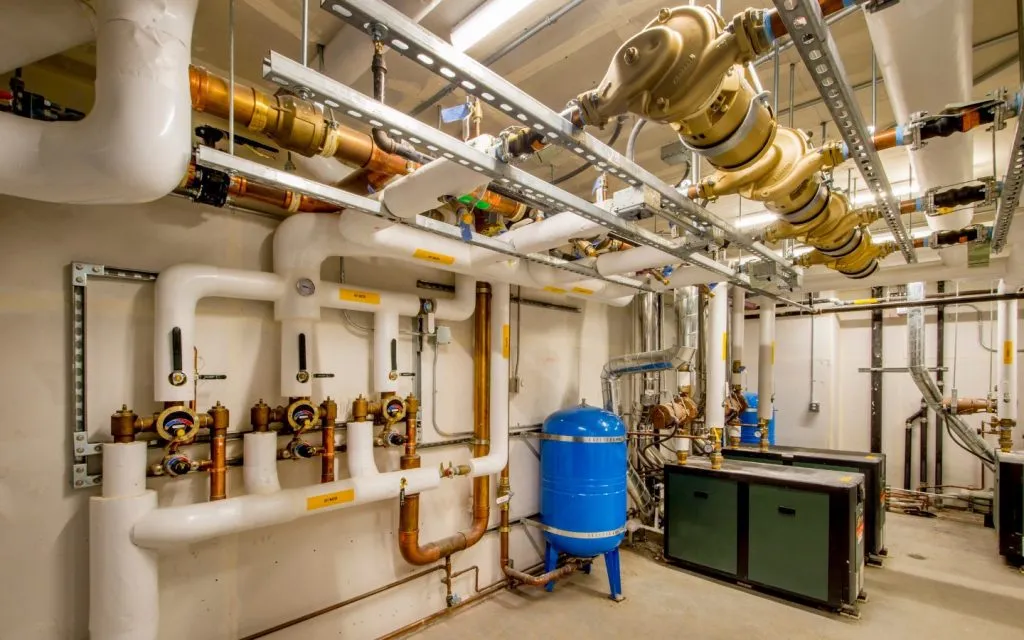Learning
AI and ML in Agriculture: Improving Crop Yield and Sustainable Farming
Artificial Intelligence (AI) and machine learning (ML) have emerged as effective tools in revolutionizing agriculture by increasing crop output, optimising resource management, and promoting sustainable farming practises. These are just some of the ways that AI and ML are transforming the agricultural industry.
The scope of an Artificial intelligence course can vary depending on its level (undergraduate, graduate, or specialized programs), duration, and curriculum. As AI continues to advance, there will be increasing demand for professionals with AI skills in various industries, making the scope of AI courses promising and dynamic.
The following are some important applications of artificial intelligence and machine learning in agriculture:
In precision farming, artificial intelligence and machine learning algorithms analyse a wide variety of data sources to provide real-time insights and suggestions. These data sources include satellite imaging, weather patterns, soil composition, and previous crop data.

How is AI and ML revolutionizing agriculture?
Farmers can make data-driven decisions on irrigation, fertilization, and pest management, optimizing resource allocation and minimizing waste. This precision farming approach enables targeted interventions, leading to improved crop yields and reduced environmental impact.
Monitoring Crop Health and Identifying Diseases:
AI and ML models can analyse photos acquired by drones, satellites, or ground-based sensors to monitor the health of crops and identify any diseases or nutrient shortages that may be present. These algorithms are able to recognise certain plant illnesses, pests, or stress indicators by utilising computer vision techniques, which enables early intervention and prevents the spread of diseases.
This preventative monitoring provides farmers with the information they need to execute targeted treatments, cut down on their use of chemicals, and guarantee the best possible crop health. Accelerate Your Path to Success: Enroll in Our Premier Web Developer Bootcamp.
Yield Prediction and Agricultural Optimization:
AI and ML algorithms process historical data to predict agricultural yields. This data may include weather patterns, soil conditions, and crop traits. Crops may also be optimised based on this data. These models take into account a number of different aspects in order to produce reliable yield projections.
With this information, farmers are able to optimise planting schedules, estimate harvest quantities, and make educated decisions regarding the storage, transportation, and selling of their crops. The entirety of the agricultural value chain benefits from this improvement in efficiency and planning.
Irrigation Management:
In order to achieve optimal irrigation practices, AI and ML algorithms analyse data gathered from soil sensors, as well as the latest weather forecasts and crop water requirements. These systems provide real-time advice on when and how much water should be applied.
They do this by continuously monitoring the soil moisture levels and the weather conditions. This helps to ensure optimal water consumption and reduces the amount of water that is wasted. This method of precision irrigation helps to preserve resources while also promoting environmentally responsible water management.
Accelerating Crop Breeding and Genetic Development:
Artificial intelligence and machine learning approaches help speed up crop breeding and genetic development. These algorithms find genetic markers linked with desirable qualities by analysing enormous volumes of genomic data. This makes the selection of superior plant types much easier.
Breeders now have the ability to design crops with enhanced yields, disease resistance, and tolerance to environmental stressors. This contributes to the development of agriculture systems that are more robust and productive.

Optimization of Supply networks:
Artificial intelligence and machine learning have the potential to improve agricultural supply networks by doing data analyses on logistics, inventory, and demand patterns. These algorithms optimise transportation routes, cut down on food waste, and increase the efficiency of supply chain operations. As a result, crops are transported and distributed in a timely way while simultaneously reducing their impact on the environment and their consumption of resources.
Farm Robotics and Automation:
Artificial intelligence (AI) and machine learning (ML) technologies are used in the various farm robotics and automation systems. Robots equipped with AI algorithms can perform tasks such as harvesting, weeding, and sorting, reducing the labor-intensive nature of agricultural operations. In the agricultural sector, these technologies help alleviate labour shortages while also increasing production and lowering costs.

Pest and Disease Management:
AI and ML algorithms aid in pest and disease management by monitoring and predicting outbreaks. These algorithms are able to provide early warnings and make recommendations for relevant remedies since they analyse data on insect populations, weather conditions, and crop vulnerabilities. This preventative method assists farmers in minimizing crop losses, reducing their dependence on pesticides, and promoting practices that are more environmentally friendly in the management of pests.
Weed Detection and the Application of Herbicides:
With Greater Precision, Artificial intelligence and machine learning models are able to recognise and categorise various weed species present in fields by utilising image recognition techniques. This permits tailored herbicide application, which reduces the amount of chemical used and lessens the impact on plants that are not the intended target. Farmers can maximise crop growth, improve resource efficiency, and promote sustainable weed control practices if they accurately detect and manage weeds. This is achieved through promoting sustainable weed management practices.
Management of Livestock:
Artificial intelligence and machine learning technologies are used in livestock management, which improves animal health, welfare, and productivity. Machine learning algorithms analyze data from sensors, such as wearable devices, to monitor vital signs, detect health issues, and predict animal behavior. The ability to intervene early, optimise feeding techniques, and improve overall management practices in livestock farming are all made possible as a result of this.
Analytics Predictive of Market Trends:
Artificial intelligence and machine learning algorithms analyse market data, historical prices, and consumer trends in order to produce predictive analytics for farmers. Farmers are able to select crops, determine production numbers, and time their market entries more intelligently when they have access to these insights and utilise them. This assists in optimising profitability, reducing financial risks, and better aligning agricultural production with the demands of the market.

Monitoring and Managing Soil Health:
Artificial intelligence and machine learning models provide assistance in monitoring soil health by doing data analysis on readings from soil sensors, satellite imaging, and historical records. These algorithms analyse the fertility of the soil, as well as its moisture levels and nutrient content, and then make recommendations for best practices in soil management.
By optimizing soil health, farmers can improve crop productivity, reduce nutrient runoff, and promote sustainable soil management practices. Increasing Climate Resilience and Adaptation Artificial intelligence (AI) and machine learning (ML) technologies are helping farmers adapt to the effects of climate change and increase climate resilience.
These algorithms provide useful insights on optimal crop varieties, planting dates, and adaptation tactics by analysing climatic data, historical patterns, and crop responses. This enables farmers to make decisions based on accurate information, which allows them to reduce the risks posed by climate change and maintain productivity despite shifting climatic conditions.
Farm Management Systems:
AI and ML are both being included into farm management systems, which are designed to centralize and analyse data gathered from a variety of sources, including sensors, machines, and weather stations. These systems offer real-time monitoring, analytics, and decision assistance to farmers. As a result, resource allocation, task scheduling, and the optimisation of agricultural operations may be accomplished more effectively.
Sustainable Resource Management:
AI and ML contribute to sustainable resource management by optimizing the use of water, fertilizers, and energy in agriculture. These technologies make precise resource allocation and the reduction of waste possible through the analysis of data on the availability of resources, the requirements of crops, and the elements in the environment. This encourages the conservation of resources, lessens the impact on the environment, and contributes to farming practises that are more sustainable.
Summary:
Traditional agricultural practices are being revolutionised by the application of artificial intelligence and machine learning in agriculture, which enables more effective utilisation of resources, enhanced decision-making, and farming practices that are more environmentally friendly. Agriculture has the potential to become more environmentally friendly, productive, and efficient if it makes use of the power of AI and ML.
These technologies, which provide insights that are driven by data, give farmers the ability to make educated decisions, maximise the use of resources, and adopt practices that are more precision-oriented. In the end, the application of AI and ML in agriculture leads to increased crop yields, decreased negative effects on the environment, and the development of food systems that are both sustainable and resilient.
These technologies have the potential to address urgent difficulties in food production, environmental sustainability, and climate resilience, ultimately leading to a global food supply that is more secure and more environmentally sustainable.

Learning
First-Time Buyer’s Guide to the UK Property Market

Entering the UK property market as a first-time buyer can feel both exciting and daunting. The process is filled with potential pitfalls and complex decisions, but with the right guidance, it can be navigated smoothly. The estate agents in Yorkshire demystify the journey from the initial decision to buy a home to the moment you step over the threshold of your new property.
Understanding Your Financial Position
The first and perhaps most crucial step in the home-buying process is understanding your financial situation. This includes assessing your savings, income, and current debts. Here’s how you can prepare:
1. Deposit: Generally, you’ll need at least 5% of the property price as a deposit, though aiming for 10% or more can provide better mortgage rates.
2. Income and Expenses: Use a budget planner to assess your monthly income against your expenses. This will help you understand how much you can afford in monthly mortgage repayments.
3. Credit Score: Lenders will evaluate your credit score to determine your mortgage eligibility. So it’s important to have a good credit score, and you should work on it if required.
4. Mortgage Options: Speak to a mortgage advisor to understand different types of mortgages, such as fixed-rate, variable-rate, and help-to-buy schemes.
Getting a Mortgage Agreement in Principle
A Mortgage Agreement in Principle (AIP) is a statement from a lender indicating how much they’ll likely lend you. You will be a more attractive buyer with an AIP as it shows sellers you’re serious and financially prepared.
Deciding What You Want
Before you start viewing properties, it’s essential to know what you’re looking for. Consider the following factors:
1. Location: Proximity to work, schools, public transport, and amenities are key. Research neighbourhoods to find the best fit for your lifestyle.
2. Property Type: Decide whether you want a flat, terraced house, semi-detached, or detached property. Each has its pros and cons.
3. Must-Haves: Make a list of non-negotiables, such as the number of bedrooms, garden size, and parking facilities.
4. Future Proofing: Consider your future needs. Are you planning to start a family? Do you need space for a home office?
Starting the Property Search
With a clear idea of what you’re looking for, you can begin your property search. Here are some tips:
1. Use Online Portals: Websites like Rightmove, Zoopla, and OnTheMarket are excellent starting points. Set up alerts to get notified of new listings that meet your criteria.
2. Visit Estate Agents: Register with local estate agents who can provide insights into the market and inform you of new properties before they’re listed online.
3. Attend Viewings: Don’t rush this part. Visit several properties to get a feel for what’s available in your price range.
Making an Offer
Once you find a property you love, it’s time to make an offer. Here’s how to approach it:
1. Research: Check the selling prices of similar properties in the area to gauge a fair offer.
2. Negotiate: Don’t be afraid to negotiate. The starting point is most usually the asking price.
3. Conditions: You might include conditions in your offer, such as the inclusion of certain fixtures or a specific moving date.
The Legal Process
If your offer is accepted, the legal process begins. You’ll need a solicitor or licensed conveyancer to handle the legalities. Here’s what to expect:
1. Conveyancing: This is the legal transfer of property ownership. Your solicitor will handle this, including conducting searches, dealing with the Land Registry, and transferring the funds.
2. Surveys and Inspections: Arrange for a property survey to check for structural issues. There are different types of surveys, from basic condition reports to full structural surveys.
3. Mortgage Finalisation: Once the survey is complete and satisfactory, your mortgage can be finalised.
4. Exchange of Contracts: This is when the sale becomes legally binding. You’ll pay your deposit at this stage.
5. Completion: On the agreed completion date, the remaining money is transferred, and you receive the keys to your new home.
Moving In
Moving day can be hectic, but planning can ease the stress:
1. Hire a Removal Company: Book a reliable removal company well in advance. Discover the best deals by getting quotes from multiple companies.
2. Pack Strategically: Label your boxes by room and keep essential items accessible.
3. Notify Utilities and Change Address: Inform your utility providers of your move date and update your address with banks, the DVLA, and other important institutions.
Settling In
Get settled. Introduce yourself to the neighbours, familiarise yourself with the local area, and really start to make the place your own.
Here are a few final tips:
1. Safety Checks: Make sure that your smoke alarms and carbon monoxide detectors are working, and make sure that you know where the gas and electricity meters are located.
2. Maintenance Plan: Keep a record of the smooth functioning of your new home with a maintenance schedule, complete with regular checks and seasonal tasks.
3. Personal Touches: Add personal touches to make the space feel like home. This can be from putting up family photos or redoing the decoration in your rooms.
Conclusion
Buying your very first home in the UK is most definitely a milestone, difficult and full of challenges but rewarding in the end. Such a philosophy guides you in understanding finances and knowing what you want to achieve from detailed research, and seeking professional advice that confidently helps you navigate the property market. Yes, the journey may have its hurdles, but in the end—owning your own home—the reward will be worth the effort. Welcome to your new chapter!
SEE ALSO: Conquer the Chaos: Hacks to Clean Your Home in Half the Time
Learning
5 Health Benefits of Regular Pedicures

There’s nothing quite like a pedicure to keep your feet looking and feeling their best, but did you know that pedicures do more than simply enhance the appearance of your feet? Many people don’t realize that regular pedicures can come with a wide range of health benefits that can promote the well-being of your feet, so here are some ways that your routine pedicure keeps both your toenails and feet in the best condition possible!
Smoother Skin
One of the biggest misconceptions about pedicures is that they only cater to and look after your toenails. While you’ll definitely be leaving each session with a fresh coat of nail polish, your pedicure can also do wonders for the health of your skin. Aside from trimming and shaping your nails and cuticles, you’ll notice that your nail technician also dedicates a few steps to the skin of your feet.
After inspecting your feet and looking for any issues or imperfections that may need to be addressed, your technician will work on an exfoliating scrub to remove any dead skin cells. This step may also be aided by a foot file, which can be used to buff away any calluses and other problem areas manually.
Softer Skin
After your nail technician addresses all the problem areas of your feet and removes any unwanted dead skin cells, he or she will often massage in a moisturizing product, such as lotion, cream, or butter, to ensure that your skin is properly moisturized. These products contain skin-loving ingredients that will ensure that your feet have everything they need to look and feel their best so that you can walk out of your pedicure with a renewed sense of confidence.
Healthier Nails
After your pedicure session, your nails will not only look better due to the fresh coat of nail polish, but they’ll also be healthier and stronger. This is because your nail technician takes their time to ensure that your nails are properly looked after through steps that include deep cleaning, nail trimming, nail filing, and cuticle care. All of these things work together to prevent issues like ingrown nails from occurring, all the while improving the appearance of your nails.
Increased Blood Circulation
While the specific steps included in your pedicure will depend on the beauty salon, most pedicures will have a massage step somewhere in the mix. One of the often overlooked benefits of these massages is the increased blood circulation, which can deliver more nutrients and oxygen to your feet and nails, promoting their health and appearance. Aside from that, better blood flow means reduced tension and soreness, as well as better distributed heat throughout your body.
Reduced Infections
A significant amount of dirt and bacteria can build up on your feet without you even realizing it, but pedicures can be a great way to prevent these from happening in the first place. The exfoliation step of a pedicure removes dead skin cells as well as all the debris that may have accumulated underneath, and the deep cleaning of your toenails and cuticles also gets rid of any impurities that may have slipped beneath them, which can stop infections from happening.
These are some of the many health benefits that you can look forward to at your next pedicure appointment. However, it’s worth noting that you need to book regular sessions to truly reap all the rewards. This can be difficult, especially when you don’t feel like driving to your nearest nail salon after a long day, but the good news is that you can enjoy the salon experience in the comfort of your own home with a home pedicure service.
Learning
Commercial Boiler Installation Services London

For businesses in the bustling city of London, having a reliable heating system is crucial. Whether you’re opening a new office, expanding your current premises, or simply upgrading an outdated system, commercial boiler installation services for businesses in London are essential to ensure your operations run smoothly and efficiently. Proper installation and maintenance of commercial boilers can make a significant difference in energy efficiency, cost savings, and the overall comfort of your workspace.
The Importance of Professional Installation
When it comes to installing a commercial boiler, professional expertise is paramount. Here’s why:
- Efficiency and Performance: Professional installation ensures that your boiler operates at peak efficiency, reducing energy consumption and lowering utility bills. A well-installed boiler can effectively meet the heating demands of your business without unnecessary energy waste.
- Safety: Commercial boilers are complex systems that require precise installation to operate safely. Professional installers adhere to stringent safety standards and regulations, minimizing the risk of accidents and ensuring the safety of your employees and premises.
- Compliance with Regulations: Commercial properties are subject to various building codes and regulations. Professional installers are well-versed in these requirements and ensure that your boiler system complies with all local laws and standards.
- Longevity and Reliability: Proper installation is critical to the longevity and reliability of your boiler. A professional installation can prevent common issues such as leaks, pressure problems, and system failures, ensuring that your boiler runs smoothly for years to come.
Key Considerations for Commercial Boiler Installation
When planning for a commercial boiler installation, several factors need to be considered:
- Type of Boiler: The type of boiler you choose will depend on your business’s specific needs. Options include gas boilers, oil boilers, and electric boilers, each with its own set of advantages. Consulting with a professional can help you determine the best choice for your business.
- Sizing and Capacity: The boiler’s size and capacity must match the heating demands of your commercial space. An undersized boiler will struggle to meet your needs, while an oversized one will lead to inefficiencies and higher costs.
- Location: The placement of your boiler affects its efficiency and accessibility for maintenance. Professional installers can help you choose the optimal location for your boiler.
- Integration with Existing Systems: If you’re upgrading or replacing an existing boiler, it’s essential to ensure compatibility with your current heating system. Professional installers can seamlessly integrate the new boiler with your existing setup.
Choosing the Right Installation Service

Selecting the right installation service provider is crucial to the success of your boiler installation project. Consider the following when making your choice:
- Experience and Expertise: Look for a provider with a proven track record in commercial boiler installations. Experienced installers can handle the complexities of commercial systems and provide high-quality workmanship.
- Reputation: Check reviews and testimonials from previous clients to gauge the provider’s reliability and customer satisfaction.
- Comprehensive Services: Choose a provider that offers a full range of services, including installation, maintenance, and repair. This ensures that all your boiler needs are met by a single, trusted source.
In London, ROWLEN is a reputable name known for delivering top-notch commercial boiler installation services. Their team of experts is dedicated to providing efficient, safe, and compliant installations tailored to the unique needs of businesses.
Conclusion
Investing in professional commercial boiler installation services for businesses in London is essential for ensuring efficiency, safety, and long-term reliability. By choosing an experienced and reputable service provider like ROWLEN, you can rest assured that your heating system will be installed correctly and maintained to the highest standards. Proper installation not only enhances the performance of your boiler but also contributes to the overall comfort and productivity of your business environment.
SEE ALSO:
-

 News4 years ago
News4 years agoLet’s Know About Ultra High Net Worth Individual
-
Entertainment2 years ago
Mabelle Prior: The Voice of Hope, Resilience, and Diversity Inspiring Generations
-
News11 years ago
Enviromental Groups Tell Mekong Leaders Lao Dam Evaluation Process Flawed
-

 Health4 years ago
Health4 years agoHow Much Ivermectin Should You Take?
-

 Tech3 years ago
Tech3 years agoTop Forex Brokers of 2023: Reviews and Analysis for Successful Trading
-

 Lifestyles3 years ago
Lifestyles3 years agoAries Soulmate Signs
-

 Entertainment3 years ago
Entertainment3 years agoWhat Should I Do If Disney Plus Keeps Logging Me Out of TV?
-

 Health3 years ago
Health3 years agoCan I Buy Ivermectin Without A Prescription in the USA?